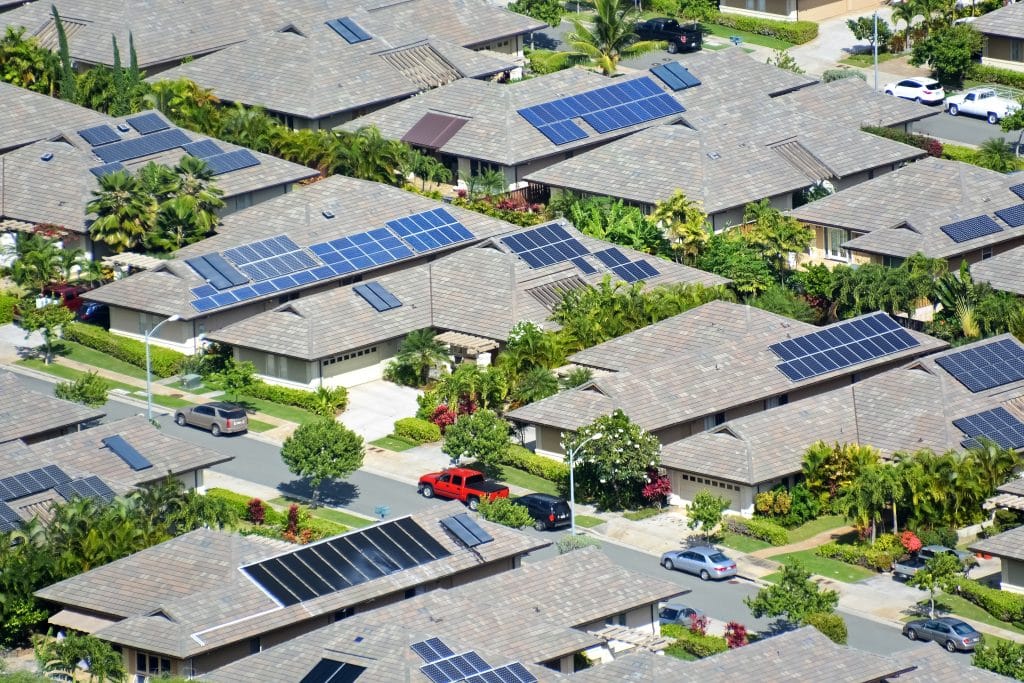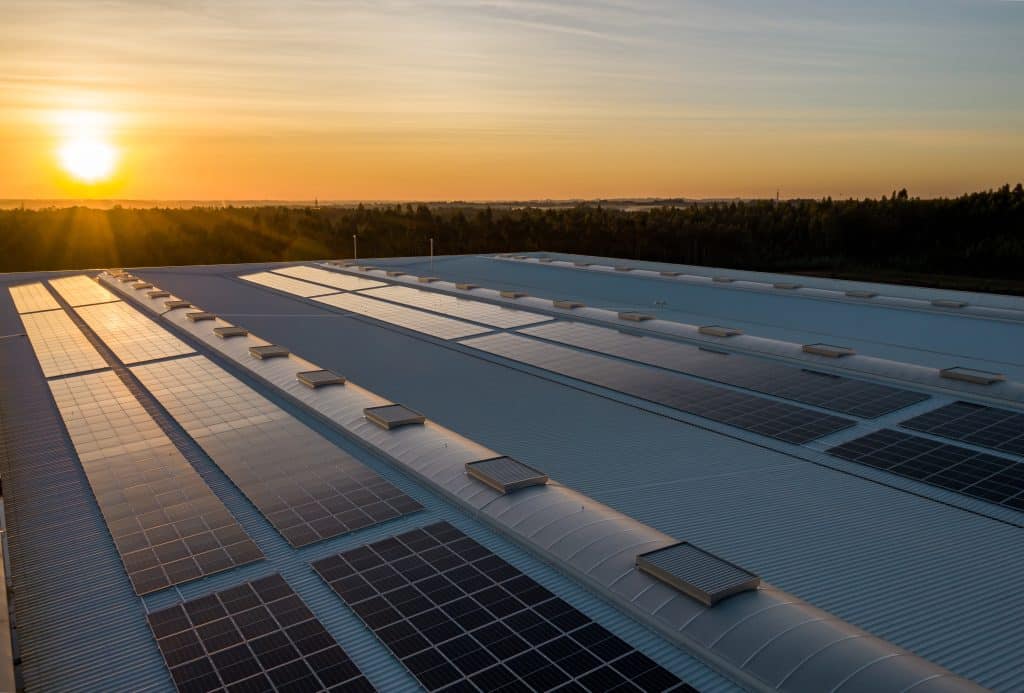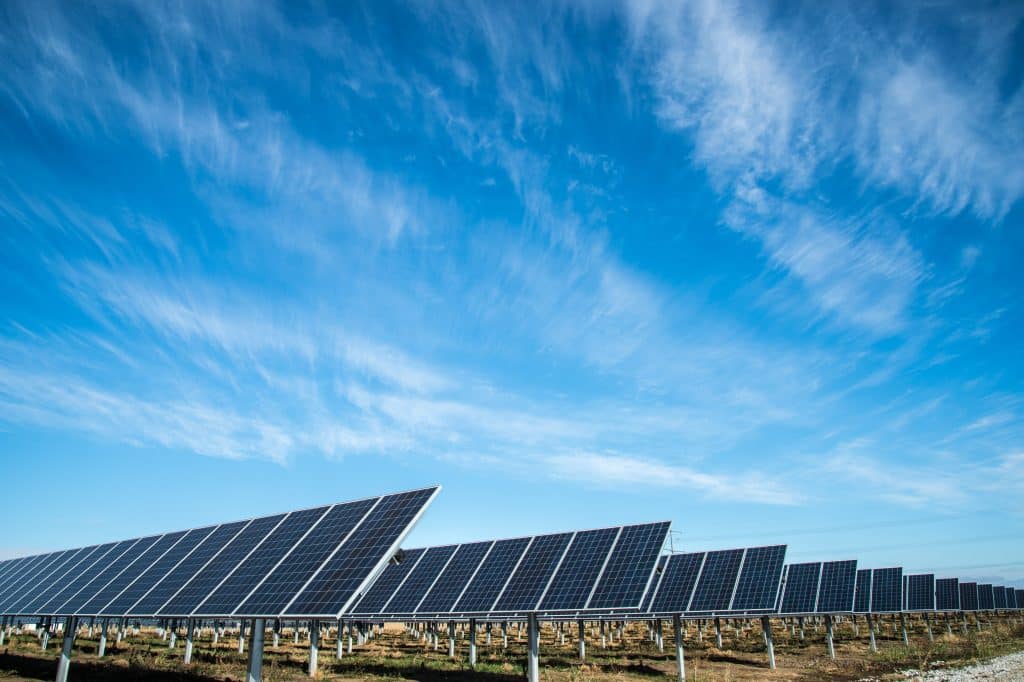Solar panels are one of the most important inventions of our time. Not only do they provide clean and renewable energy, but they also help reduce our carbon footprint.
You must be wondering, “how are solar panels made?” How many types of solar panels are currently available in the market? What goes into their production process? Well, keep reading if you want your most pressing questions answered.
Learn in This Article
- What Are Solar Panels Made Of
- Types of Solar Panels
- Monocrystalline Solar Panels
- Polycrystalline Solar Panels
- Amorphous Solar Panels
- The Production Process
- Convert Sand to Crystallized Silicone
- Formation of Ingots
- Grind and Polish the Ingots
- Polarize Conductors
- Weave a Solar Grid
- Coat the Solar Panel
- Install the Solar Panel
- How Do Solar Panels Work
- Key Takeaways
What Are Solar Panels Made Of
Solar panels are made of photovoltaic cells, also known as PV cells. They use semiconductor materials, such as crystalline silicon, cadmium telluride, or copper indium selenide.
When light hits these materials, the electrons create an electric current that can be harnessed to power homes and businesses.
Types of Solar Panels
Before solar panels are installed, it’s best to know about the different types available in the market today and what the pros and cons are of each type. Read on to find out more.

Monocrystalline Solar Panels
Monocrystalline solar panels are made of a single large silicon crystal. They are cut from a cylindrical ingot of silicon and sliced into wafers. Overall, monocrystalline solar panels are the most efficient type of solar panels for commercial use, but they also tend to be the most expensive.
Polycrystalline Solar Panels
As opposed to monocrystalline solar panels, polycrystalline panels are made of multiple smaller silicon crystals.
They are made by melting down large silicon ingots and then cooling them into a rectangular block that will be cut into wafers. Polycrystalline solar panels are less efficient than monocrystalline solar panels, as they are more sensitive to high temperatures and have a lower lifespan. However, they can be a good choice if your budget is limited.
Amorphous Solar Panels
Amorphous solar panels are made of a non-crystalline silicon material. They are made by depositing a very thin layer of silicon onto a substrate, such as glass or metal. Amorphous solar panels are the least efficient type of solar panel, but they are also the easiest and cheapest ones to produce.
The Production Process
Now that we learned more about solar panel materials and the types of solar panels currently available on the market, let’s take a closer look at the production process.

Step 1: Convert Sand to Crystallized Silicone
Solar panels start from the sand. That’s right—the same sand you might find at the beach. This sand is then converted into silicon dioxide, also known as silica, which is then heated in a furnace at a high temperature until it turns into a liquid. Once it is in liquid form, it is cooled and allowed to solidify into a single large crystal.
Step 2: Formation of Ingots
First of all, ingots are large blocks of solid cylindrical metal that will eventually be cut into smaller wafers. In order to create an ingot, molten silicon is poured into a mold and allowed to cool.
Step 3: Grind and Polish the Ingots
The next step in solar panel manufacturing is grinding down the ingots into a cylindrical shape. This is done using a large grinding machine. Once this process is over, the ingots must be polished to create a smooth surface.
Step 4: Polarize Conductors
To create ingots, the production machine uses infused boron, a metal added to the silicon wafers. In this stage, two types of silicone are made:
- the N-type silicon, which is located on the surface of the solar panel
- the P-type silicon, which lies below the N-type
Step 5: Weave a Solar Grid
Considering that the N-type and P-type are imbalanced, the wafers are layered and fused in a grid to conduct electricity.
The solar grid is what gives solar panels their distinctive appearance. It is made by weaving together thin wires of copper, and the resulting grid is then attached to the solar panel.
Step 6: Coat the Solar Panel
The solar panel is then coated with a thin layer of silicon, which helps to protect the panel from damage and makes it more efficient at converting sunlight into electricity.
Step 7: Install the Solar Panel
The solar panel production ends with its installation. This is typically done by mounting the panel on the roof of a home or building with high exposure to the sun. Solar panels can also be installed in ground-mounted systems.

How Do Solar Panels Work
Solar panels work by converting sunlight into electricity. The PV cells in a solar panel absorb sunlight and use it to generate electric current. This current is then sent to an inverter, converting it into AC power. The AC power can then be used to power lights, appliances, and other devices in your home or business.
Find out if solar panels need direct sunlight in order to generate electricity.
How Solar Panels Are Made: Key Takeaways
In conclusion, solar panels are a vital part of the renewable energy mix. They provide clean and emissions-free electricity that can help to reduce our reliance on fossil fuels.
With solar panel production costs falling rapidly, now is the time to invest in this critical technology. With government support and continued innovation, solar panels will play an increasingly important role in powering our homes and businesses in the years to come.
Frequently Asked Questions
Solar panels primarily use environmentally-friendly materials, such as aluminum, silicon, steel, and glass.
Although many people feel skeptical about the availability of these materials, many reports state they won’t be running out anytime soon. For example, aluminum accounts for 8% of the most abundant material on Earth.
The most durable solar panels have an average lifespan of 20–25 years. However, this doesn’t mean that they will stop generating electricity. After that estimated period, solar energy production will only be reduced.
Yes, you can build your own solar panel. However, it is important to note that solar panels are complex devices and should only be built by experienced professionals.
